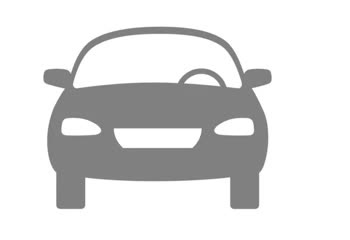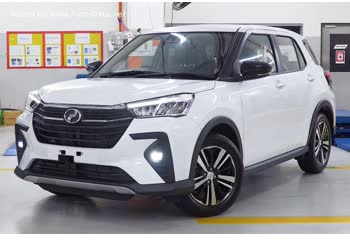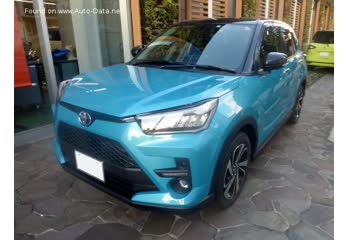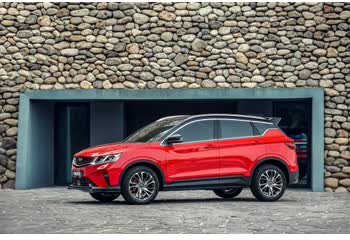Everything you need to know about specifications and performance - Daihatsu Rocky 2019 - 1.0 Turbo (98 Hp) 4WD CVT

Overview:
What is the engine capacity of a Daihatsu Rocky 2019?
The engine capacity of the Daihatsu Rocky 2019 is 996.
Daihatsu Rocky 2019 How many horsepower?
The engine power of the Daihatsu Rocky 2019 is 98 Hp @ 6000 rpm..
What is the Daihatsu Rocky 2019 engine?
Daihatsu Rocky 2019 engine is 1KR-VET. (Click to see other cars using the same engine)
How much gasoline does a Daihatsu Rocky 2019 consume?
The Daihatsu Rocky 2019 consumes 5.7 liters of gasoline per 100 km
General:
Brand: Daihatsu
Model: Rocky
Generation: Rocky (A200)
Modification (Engine): 1.0 Turbo (98 Hp) 4WD CVT
Start of production: November, 2019
End of production:
Powertrain Architecture: Internal Combustion Engine
Body type: SUV, Crossover
Seats: 5
Doors: 5
Engine:
Engine systems: Start & Stop System
Power: 98 hp @ 6000 rpm.
Power per litre: 98.4 hp/l
Torque: 140 nm @ 2400-4000 rpm.
Engine Model/Code:1KR-VET
Engine displacement: 996
Number of cylinders: 3
Engine configuration: Inline
Number of valves per cylinder: 4
Fuel injection system: Multi-port manifold injection
Engine aspiration: Turbocharger, Intercooler
Valvetrain: DOHC, VVT
Engine oil capacity: 3.1 l
Engine layout: Front, Transverse
Cylinder Bore: 71 mm
Piston Stroke: 83.9 mm
Compression ratio: 9.5:1
Performance:
Fuel Type: Petrol (Gasoline)
Fuel consumption (economy) - urban: 7.5 l/100 km
Fuel consumption (economy) - extra urban: 5.3 l/100 km
Fuel consumption (economy) - urban (WLTC): 7.5 l/100 km
Fuel consumption (economy) - extra urban (WLTC): 5.3 l/100 km
Fuel consumption (economy) - combined: 5.7 l/100 km
Fuel consumption (economy) - combined (WLTC): 5.7 l/100 km
Weight-to-power ratio: 10.6 kg/Hp, 94.2 Hp/tonne
Weight-to-torque ratio: 7.4 kg/Nm, 134.6 Nm/tonne
Space:
Kerb Weight (kg): 1040-1050
Fuel tank capacity: 36 l
dimensions:
Length: 3995 mm
Width: 1695 mm
Height: 1620 mm
wheelbase: 2525 mm
Front track: 1475 mm
Rear (Back) track: 1470 mm
Ride height (ground clearance): 185 mm
Minimum turning circle (turning diameter): 9.8-10 m
Powertrain, Suspension and Brakes:
Drivetrain Architecture: The Internal combustion Engine (ICE) drives the front wheels permanently, and the rear wheels are driven through an electrically or mechanically operated clutch if necessary.
Drive wheel: All wheel drive (4x4)
Number of gears and type of gearbox: automatic transmission CVT
Front brakes: Ventilated discs
Rear brakes: Drum
Assisting systems: ABS (Anti-lock braking system)
Steering type: Steering rack and pinion
Power steering: Electric Steering
Tires size: 195/65 R16; 195/60 R17
Wheel rims size: 16; 17
Front suspension: Independent type McPherson
Rear suspension: Torsion
See also

Other generation.
Its production began in 1987 until 1993

Same engine. (1KR-VET).
Its production began in 2021 until Now

Same engine. (1KR-VET).
Its production began in 2019 until Now

Same production year and almost the same engine capacity.
Its production began in 2019 until 2023
Write a comment